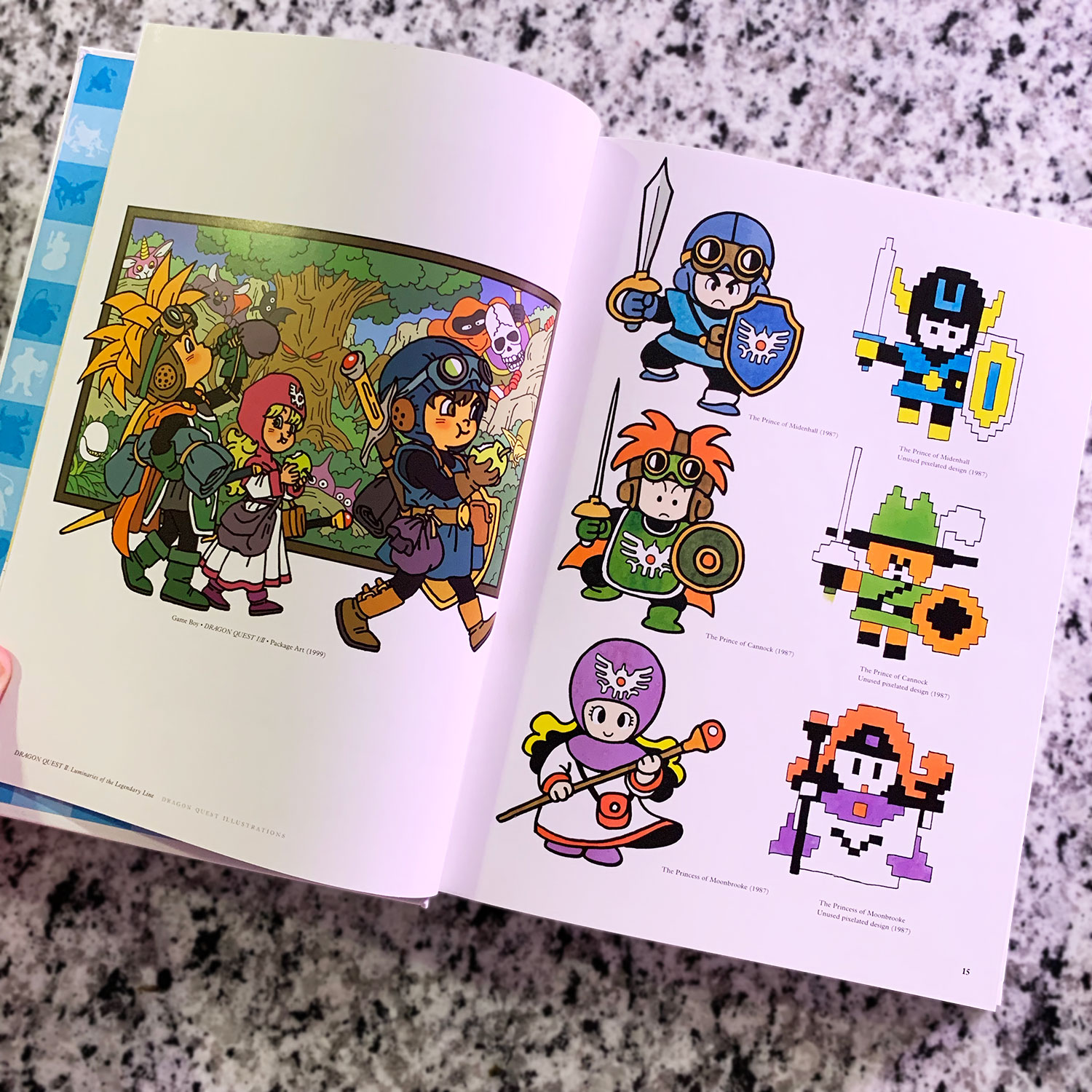The nature of behind-the-scenes work is such that it tends to go unnoticed if executed with a sufficiently deft hand. IT workers, event coordinators, and even roadies labor tirelessly in the shadows to keep their respective teams operating smoothly without ever taking the spotlight themselves. If they do their jobs right, their "audience" is none the wiser—it's only when a mistake arises that the illusion is broken.
But what happens when there's nary a mistake made in three decades of tireless productivity? And what if the worker in question isn't a low-ranking sound technician, but an immensely popular artist whose myriad creations are known the world over? As unconventional as this comparison may be, I believe it encapsulates the legendary Akira Toriyama's role in shaping the past, present, and future of Dragon Quest.
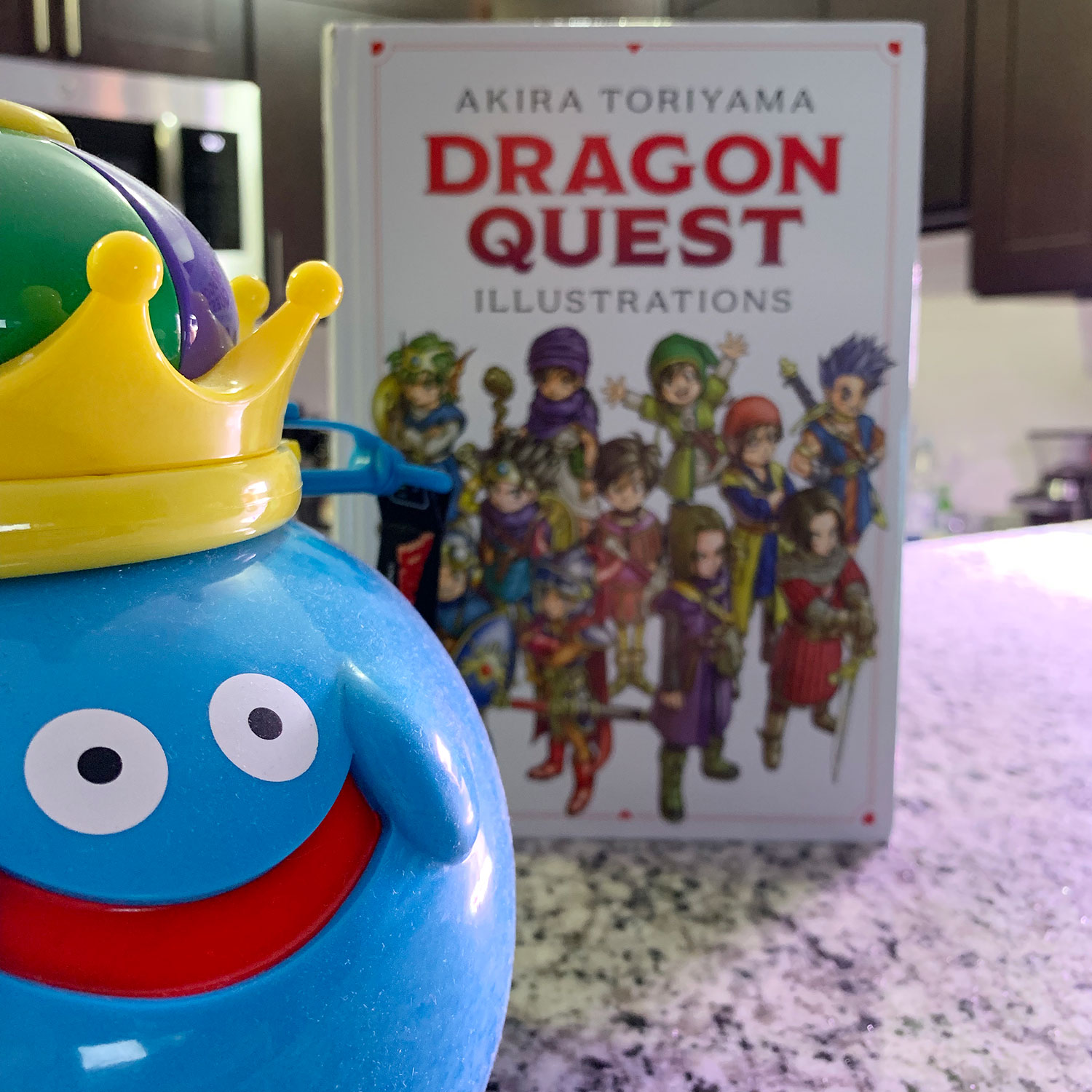
Historically far more popular in Japan than it has been in the West, Dragon Quest is one of Toriyama's most prolific creative wellsprings, encompassing hundreds, if not thousands, of designs and illustrations over the series' thirty-one-year history. Yet until the mid-to-late 2000s, I can scarcely recall meeting a single person whose first association with the name Akira Toriyama wasn't Dragon Ball. That perception has started to shift as Dragon Quest has grown in popularity abroad, but the fact remains that Toriyama's hand in propelling the series forward—beginning with his first job drawing for an unassuming Famicom game that more or less pioneered the "Japanese RPG" as an enduring concept—is less salient than his attachment to the ever-popular Dragon Ball.
Publisher VIZ Media aims to shine a greater spotlight on Toriyama's work with Dragon Quest Illustrations, a hardbound tome containing over 500 quintessential pieces of art that span the entirety of Dragon Quest's history. While sparse in text, the book features iconic illustrations from every mainline Dragon Quest game and notable spin-off, including package designs, promotional artwork, character sketches, and more.
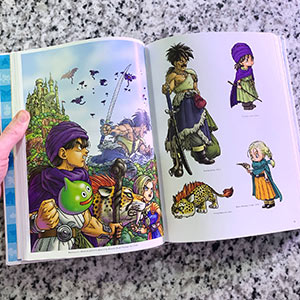
So what did Toriyama do that we, the players, "didn't notice?" Create one of the most iconic mascot characters in Japanese video game history with a design so simple it borders on effortless, for one. With an unmistakably poo-like shape and a carefree grin, the Slime is as recognizable as it is well-represented throughout Dragon Quest Illustrations. Its various iterations have appeared, largely unchanged, in nearly every Dragon Quest title since Toriyama first created it back in 1986. According to Toriyama, when he first received a proposal to design characters for Dragon Quest, his busy schedule and unfamiliarity with the concept of an RPG almost led him to refuse the job: "...I wasn't all that knowledgeable about fantasy worlds in the first place," Toriyama recalls in an author foreword. "[Dragon Quest creator] Horii-san had to send me simple, rough sketches, like of the gloopy slime monster that basically looked like a puddle." After some back-and-forth on the project, Toriyama reluctantly accepted at the behest of his persistent editor, Kazuhiko Torishima, unknowingly establishing the art direction of a series that would flourish for more than three decades.
Toriyama's illustrations in the early years of Dragon Quest have a quaint presentation that reflects both the fledgling series' first uncertain steps into its developing identity as well as the artistic sensibilities of the late 80s-early 90s. (In the book, Toriyama himself refers to these designs as "crude" in an amusing display of humility.) Hues tended to be lighter, designs hand-colored, and shadows more prominent. The diminutive proportions of characters and monsters helped them transition naturally into sprite form upon their implementation into the game(s) proper. Toriyama would eventually shift into coloring digitally around the release of Dragon Quest Monsters for Game Boy and more notably, Dragon Quest VII: Fragments of the Forgotten Past. Comparing works on either side of that technological line makes for a fascinating experiment, and one that reveals what is possibly the largest single jump in Toriyama's stylistic progression throughout the entire series.
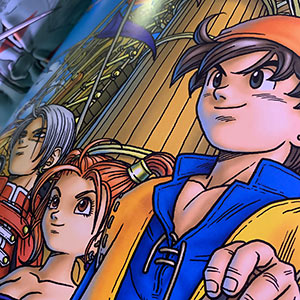
A notorious overworker, Toriyama reportedly drew far more Dragon Quest designs than what his proposals actually called for at numerous points in his career. Monsters like the Cannibox and Tortoceratops were originally created around the time of Dragon Quest II, but were not implemented until Dragon Quest III and V respectively. Toriyama would also frequently create more characters, monsters, and vehicles than he was asked to, leading to many of his designs going unused (but thankfully collected in Dragon Quest Illustrations). While commentary on these circumstances in the book is sparse, one editor remarks that Toriyama's habit of overdrawing "...demonstrates how much attention he pays to the constructions and principles of motion in his designs." His fierce desire to create lively, vivid worlds is at once clearly communicated and masterfully subtle.
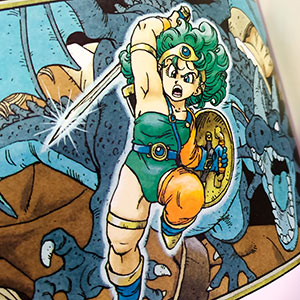
Even beyond Toriyama himself, other Dragon Quest series staff demonstrate a mindful approach to preserving the series' immaculate presentation. Editor's notes for Dragon Quest VIII reveal the development team's careful consideration in not revealing artwork or details for certain characters in promotional materials so as to highlight their impact in-game. Dragon Quest Illustrations collects several of these rare pieces of art, including the human forms of King Trode, Princess Medea, and the Lord of the Dragovians from Dragon Quest VIII. Of special note are two illustrations of the Demon Hero Ann-Lucia from Dragon Quest X, which had never been published before their appearance in this book due to the plot-sensitive nature of the character. These curios are few in number, but among the most compelling inclusions in Dragon Quest Illustrations.
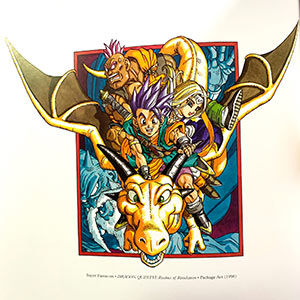
While indeed rife with glossy, high-quality art, this book is ultimately difficult to critique in terms of "value." It contains much less text than many of its contemporaries, eschewing detailed design commentary in favor of maximum-size art cells. This approach does indeed cut to the heart of what one should reasonably expect from a book titled "Dragon Quest Illustrations," but its sparse pages disappoint if compared to, say, the encyclopedia-like Final Fantasy Ultimania Archives published by Dark Horse. With only four pages of remarks from the editorial staff of Japanese manga magazine V Jump—dwarfing a paltry page and a half of commentary by series creator Yuji Horii and book subject Akira Toriyama—I found little to sink my teeth into beyond the book's sumptuous illustrations. But sumptuous they are!
In spite of their humble, pixelated appearance in the original Dragon Quest, Toriyama's expressive character and monster designs from thirty-one years ago remain an indelible component of the series' DNA. Horii knows well the power Toriyama's artwork possesses: "Though [the designs] could only appear as sprites on the screen, one look at Toriyama-san's art and those images would stick with you, forever altering how you viewed those little sprites." That notion is especially resonant for someone like me, who grew up projecting his own imagination onto the pixels that comprised his childhood RPG heroes.
Dragon Quest Illustrations is available now via Amazon and other outlets for $34.99 USD/$46.99 CAD.
A copy of Dragon Quest Illustrations was provided by VIZ Media to facilitate feature coverage. This relationship in no way influenced the author's critique of the product.
